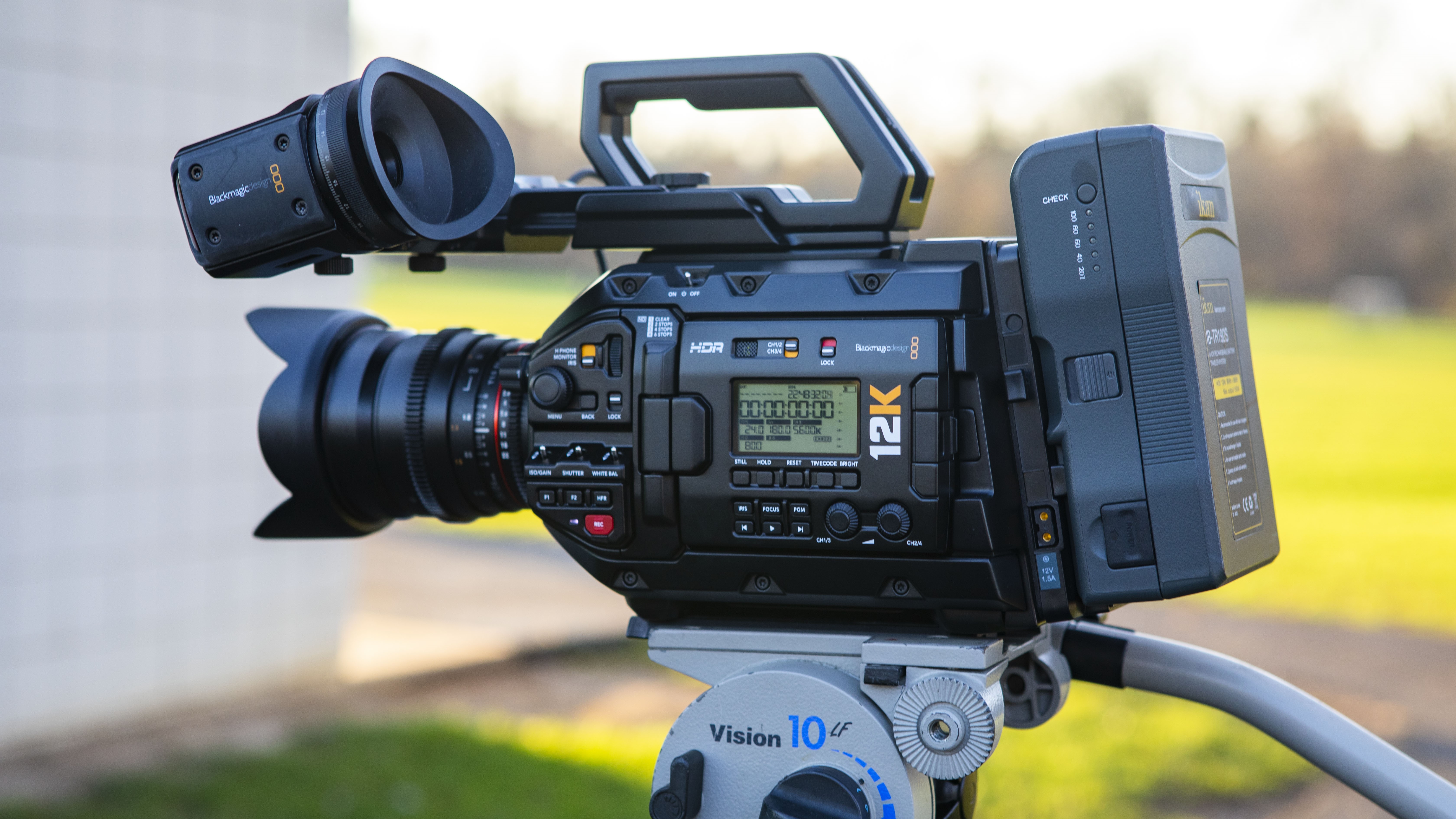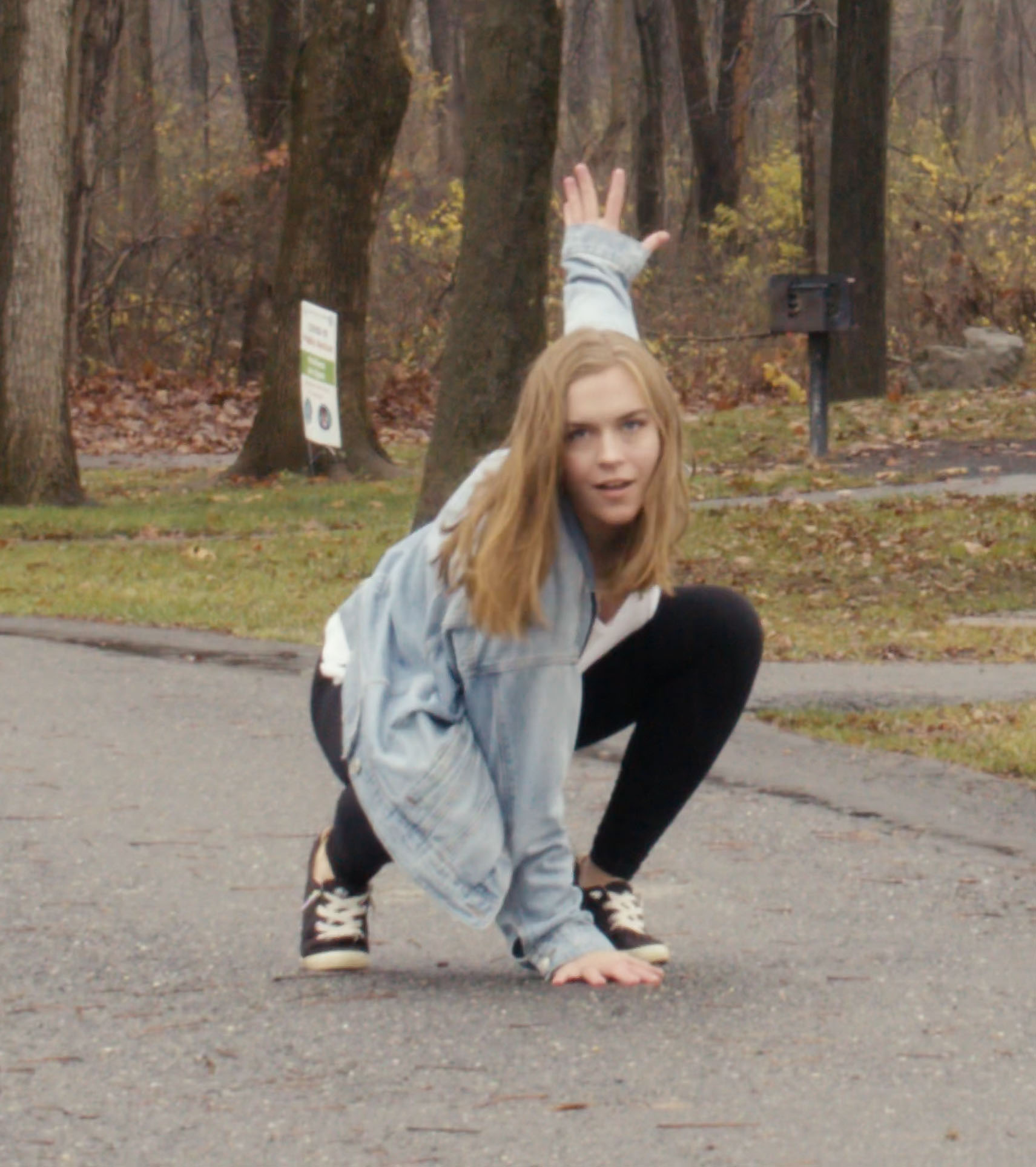In Review: Blackmagic URSA Mini Pro 12K
What’s it like to shoot in 12K RAW?

The latest generation of Blackmagic Design’s URSA Mini Pro line is the 80 megapixels per frame URSA Mini Pro 12K. Shooting in 12,288x6480 (17:9) in up to 60 frames per second, this is another Blackmagic Design first. So, what’s it like to shoot in 12K RAW? That’s what I’d like to discuss in this review.
FEATURES
SUMMARY
Blackmagic Design’s URSA Mini Pro 12K—the best way to achieve the “Hollywood Look” without paying their budget.
APPLICATION
Great for studio or field shoots with quick set-up, a multitude of shooting options and resolutions, mounts available for your lenses and fast menu access.
KEY FEATURES
12K RAW files with up to 240 fps shooting in 4K, internal CFast or external SSD storage, 4-inch monitor included in base price and a complete cinema 12K package for a fraction of the competition’s price.
PRICE
Blackmagic Design URSA Mini Pro 12K body—$9,995.00
Blackmagic Design URSA Mini Pro EF Mount—$175.00
Blackmagic Design URSA Viewfinder—$1,495.00
Blackmagic Design URSA Gold Battery Plate—$95.00
Blackmagic Design URSA VLock Battery Plate—$95.00
Blackmagic Design URSA Mini Shoulder Kit—$395.00
Blackmagic Design’s URSA Mini Pro 12K ships with a PL mount and offers an EF, B4 and F mount as options. Because all of my lenses are EF mount, I asked for an EF mount, a VLock Battery Plate, URSA Viewfinder and URSA Mini Shoulder Kit.
The URSA Mini Pro 12K is a professional camera with a Super 35mm sensor utilizing 12-bit RAW files, 14 stops of dynamic range, behind the lens selectable ND filters, controls for ISO, shutter, white balance, iris, focus, audio channel 1/3 and 2/4 adjustments and menu controls all on the side facing the operator.
Behind the 4-inch LCD monitor are more controls including two CFast and two SD slots in addition to a USB-C input (not for recording to an SSD drive). The back houses the SDI out, in and reference/timecode in connections; and a USB-C input for recording to an external SSD drive.
Recording formats come in two compression categories: Constant Bitrate and Constant Quality. Constant Bitrate allows four modes of RAW shooting in 12K (12,288x6480) 5:1 (578 MB/s), 8:1 (361 MB/s), 12:1 (241 MB/s), 18:1 (160 MB/s). While these data rates are based on 24 frames per second, higher data rates are required for higher frame rates. If you prefer, you may shoot in 8K, 6K or 4K all with the same four modes of shooting with lesser file sizes.
Constant Quality uses a range of capturing speeds with 12K’s Q0 (241 - 578 MB/s), Q1 (144 - 361MB/s), Q3 (96 - 241 MB/s), Q5 (72 - 160MB/s) with lower megabytes per second in 8K, 6K and 4K. These data rates are also dependent on the frames per second selection.
The optional viewfinder has zoom, display and peak buttons (which are user assignable to other functions as well) on top of the housing containing an extremely sharp 1920x1080 Organic LED display with a built-in digital focus chart.
Blackmagic Design’s URSA Mini Pro 12K shoots in 12,228x6480 (17:9) and 11,520x6480 (16:9) up to 60fps; 12,288x5112 (12K 2.4:1) up to 75fps; 8192x4320 (8K) and 6144x3240 (6K Super 16) up to 120fps; and 4096x2160 (4K), 3840x2160 (UHD) and 2560x2136 (4K Anamorphic) up to 240fps—you have a multitude of options.
The camera comes loaded with Blackmagic Camera Setup 7.0, RAW 2.0 Beta 2 software and requires a minimum of Mojave 10.14 or Catalina 10.15, Windows 10 64-bit, Abobe CC 2019, Avid Media Composer 2018, and DaVinci Resolve 16.3 Beta.
IN USE
Using a camera that is capable of shooting in 12K requires you to at least try it out. Creating a short comedy entitled “Cats and Mouse” about two over-the-hill bounty hunters trying to capture a woman with superpowers. Using editing effects to display her abilities, capturing the story in 12K was my choice.
The optional external URSA Viewfinder is worth every penny when shooting outdoors. The organic LED display was crystal clean and the zoom and peak buttons on the top made critical focusing that much better. Since my workflow ended with a 1920x1080 output, I chose to shoot in 12K RAW, 12:1 Constant Bitrate and 24fps. The glass up front was Rokinon Cinema Series T 1.5 Primes, and the files were saved to a SanDisk 2TB SSD Drive. Although not an officially recommended drive for this camera, it functioned perfectly in the misty morning to the brilliant F16 sunshine in the afternoon.
Not believing we would need the larger files 5:1 or 8:1 created—especially for a 1080p output—12:1 proved to be a viable choice. Thirty-five minutes of footage netted about 750 GB of footage. The stills that illustrate this article were from the color graded 12K RAW footage.

In the post process, I needed to download DaVinci Resolve 16.3 Beta to read the 12K RAW image. At no time did my footage bog down because of its size, and the LUTs (Look Up Tables) available in DaVinci Resolve made color grading simple.
The greatest part of shooting in 12K is the ability to “zoom in” or enlarge the frame digitally without losing quality. With our longest lens being an 85mm and zooming in 4X in DaVinci Resolve’s Inspector, this was still the sharpest footage I’ve seen. In my mindset and as I tell my students, if you shoot on 35mm film even a DVD looks phenomenal because you started with such a high-quality source. I used to mention VHS, but no one understands that anymore! Now I can say I shot my project in IMAX quality for a 1080p output.
Lastly, one of the really great things about the URSA Mini Pro 12K is that you actually get a pull-out LCD capacitive touchscreen with the camera body at its $9,995 price. The menu options that are displayed on the 4-inch monitor are critical if you want to change shooting modes and quality settings. Our university’s high end, leading manufacturer 35.5-megapixel sensor 8K digital camera body was almost three times the price and we didn't get a monitor—we paid just for the body. The optional monitor for that camera, which you really need (and it's laid out almost exactly like the URSA Mini Pro 12K’s) in order to set the camera's parameters, costs almost $5,000 more. Why would you pay all that extra money for a name camera, when the URSA Mini Pro 12K gives you all that with an 80-pixel sensor, a 4-inch monitor and 12K shooting at less than a third of the price?
Also, other cameras have expensive licensing and proprietary software to color grade, but the URSA Mini Pro 12K includes a full version of DaVinci Resolve Studio. Since the other cameras’ LUTs are available in DaVinci Resolve, you can take advantage of the URSA Mini Pro 12K’s advanced color science and workflow to achieve a similar “look.” This is useful in case you want to match cameras or achieve a certain look without the extra cost that comes with more expensive cameras. Keep in mind, however, that obtaining the same look as another camera cannot be accomplished solely with a LUT, as each look is created specifically for each camera’s specific sensor.
The bottom line, in my opinion, for ease of use, quality and cost I prefer using Blackmagic Design.
For more information, visit www.blackmagicdesign.com.
Chuck Gloman is an associate professor of the TV/Film Department at DeSales University. He may be reached chuck.gloman@desales.edu.
Get the TV Tech Newsletter
The professional video industry's #1 source for news, trends and product and tech information. Sign up below.
Chuck Gloman is Associate Professor with the TV/Film Department at DeSales University.

